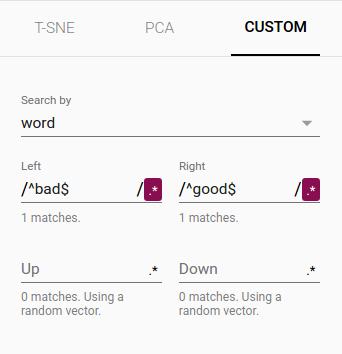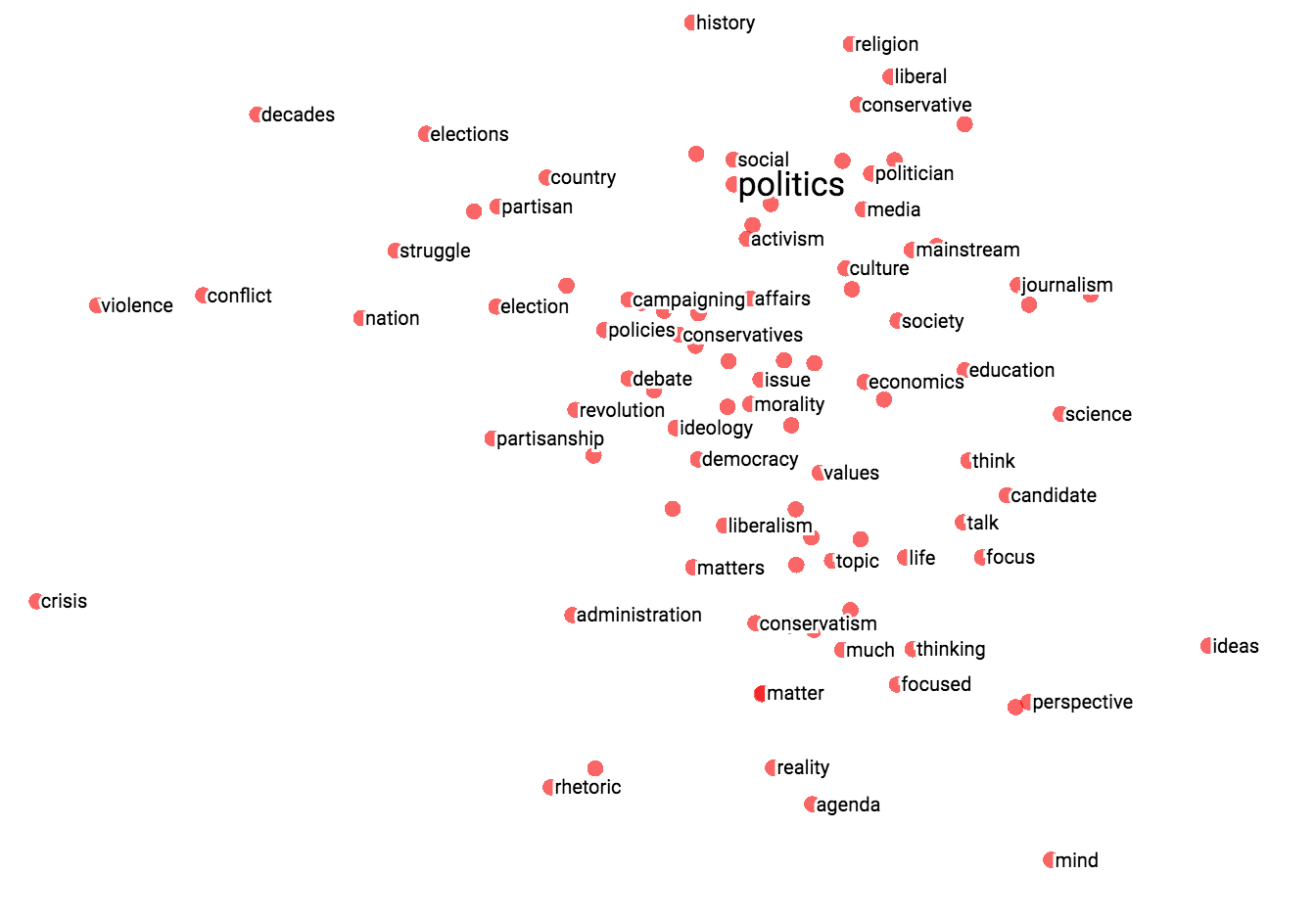


|

|
| Custom projection controls. | Custom projection of neighbors of "politics" onto "best" - "worst" vector. |
 ### Metadata
If you are working with an embedding, you'll probably want to attach
labels/images to the data points. You can do this by generating a metadata file
containing the labels for each point and clicking "Load data" in the data panel
of the Embedding Projector.
The metadata can be either labels or images, which are
stored in a separate file. For labels, the format should
be a [TSV file](https://en.wikipedia.org/wiki/Tab-separated_values)
(tab characters shown in red) whose first line contains column headers
(shown in bold) and subsequent lines contain the metadata values. For example:
### Metadata
If you are working with an embedding, you'll probably want to attach
labels/images to the data points. You can do this by generating a metadata file
containing the labels for each point and clicking "Load data" in the data panel
of the Embedding Projector.
The metadata can be either labels or images, which are
stored in a separate file. For labels, the format should
be a [TSV file](https://en.wikipedia.org/wiki/Tab-separated_values)
(tab characters shown in red) whose first line contains column headers
(shown in bold) and subsequent lines contain the metadata values. For example:
Word\tFrequency
Airplane\t345
Car\t241
...
The order of lines in the metadata file is assumed to match the order of
vectors in the embedding variable, except for the header. Consequently, the
(i+1)-th line in the metadata file corresponds to the i-th row of the embedding
variable. If the TSV metadata file has only a single column, then we don’t
expect a header row, and assume each row is the label of the embedding. We
include this exception because it matches the commonly-used "vocab file"
format.
To use images as metadata, you must produce a single
[sprite image](https://www.google.com/webhp#q=what+is+a+sprite+image),
consisting of small thumbnails, one for each vector in the embedding. The
sprite should store thumbnails in row-first order: the first data point placed
in the top left and the last data point in the bottom right, though the last
row doesn't have to be filled, as shown below.
| 0 | 1 | 2 |
| 3 | 4 | 5 |
| 6 | 7 |